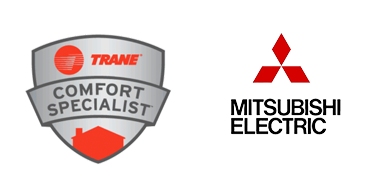How Does a Heating System Heat Your Household
There are different types of heatings systems you can find in the market which may help you to feel warm during the cold season. But did you know what exactly a heating system is? A heating system is a device for warming the air, surface, or objects. A typical home heating system provides warmth through forced air (heating the air in the house and bringing it into your living areas) or by heat radiation (typically used with electric baseboards, kerosene heaters, or other radiant heat sources). Next, let's discuss how these heating systems function.
Heating System Operation
Your heater can be powered by electricity, natural gas, or propane. When you turn on the heater, either at a thermostat setting or to an 'on' position, there is usually a fan that will immediately begin to blow air through the system. The way it does this varies depending on what type of system you have.
In a forced-air system, air from the house is cooled as it passes over the heat exchanger and is pushed outside by a blower fan. In hydronic systems, hot water or steam runs through an internal heat exchanger where it warms up the air that will be taken into the house.
What To Do If Your Furnace Stops Working
If your furnace stops working, the first thing you should do is contact a professional heating contractor to assess and fix the problem. When you hire a contractor, there are several things to consider before making an appointment. You will need to make sure that the company has the right licenses and insurance coverage.
Ask for references from previous customers, and be sure to ask if they have an emergency service line available if your furnace stops working after regular business hours.
Please note: If it's below freezing outside, turn on the furnace for a few minutes to make sure it's receiving power. If there is no power being supplied to the unit, then you will need to call an electrician.
What Parts Does a Furnace System Consist of?
Furnace systems consist of the furnace unit itself, which is either powered by electricity (like an electric furnace) or natural gas, and the central heating system (the blower that moves air through the ductwork). The central heating system itself consists of smaller units called heat distribution centers.
They are connected to supply and return air ducts, which lead to your registers. The registers are the grates you see on your floors that distribute the heated (or cooled) air throughout your home. When all of these parts work together, they produce heat for your home.


